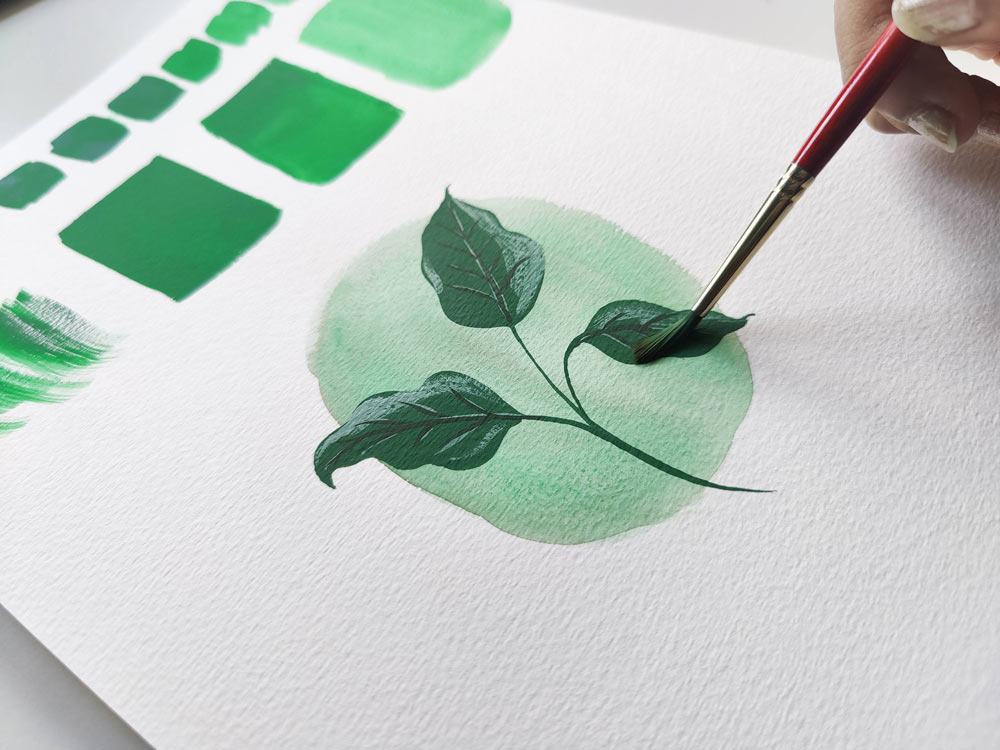Beginners Guide to Gouache Paint Consistency

Share
Are you new to Gouache? Then you probably struggle with getting the paint consistency just right for that perfect opaque finish that Gouache is known for. I went through this struggle myself and in this article and video, I will walk you through a simple technique or hack that helped me understand the different consistencies in gouache, how to achieve them, and when to use them.
Things you’ll need
For this technique or hack, if you will, you’ll need a sheet of paper, ideally one that you use for practice. You’ll need a tube of Gouache paint, I’m using my favourite, Winsor & Newton’s Designer Gouache. You’ll also need a palette, a brush, a scrap of cloth, and 2 bowls of clean water.
The Technique
I call this method the swatching method where we start by swatching the paint straight out of the tube and then continue swatching while diluting the paint with the smallest amount of water each time as you go. Remember that even with the first swatch your brush has to be just a little damp, that is, dip it in water and dab off all the excess water so it doesn’t dilute the paint. It’s also crucial that you paint one even layer and start from the left end.
You’ll notice that with the first swatch, it’s not very easy to move the brush around. You’ll notice a bit of friction and also a textured effect as you paint. Now add the tiniest amount of water you possibly can to the paint and swatch again. Keep going and make sure that you’re only adding the smallest amount of water and if at any point you feel like you’ve added too much water, you can add some paint from the tube.
As you keep going, you’ll notice that it gets easier to move the brush around and you’re able to create the swatches with much ease. As you continue, however, you’ll start noticing that the paper starts to show through. At this point, you know that the paint is getting diluted. By the time you reach the right end of the paper, your paint will look like watercolour.
Understanding the right consistency
The first two swatches on the left end (where you started) are quite thick and hard to work with if you have to create an entire painting with that consistency. However, this consistency is great for creating texture using dry brushing techniques.
The next 2-3 are the perfect consistency to paint with. They are opaque but not too thick and is easy to work with. This is the sweet spot for Gouache.
The few after these are neither here nor there and are therefore not the best consistencies to work with.
The last 3 are perfect to create background washes to help your subjects stand out or for underpaintings that act as the outline or colour blocks to build your piece over.
For you
Watch the video to understand how you can use the initial consistency to create texture, the middle aka the perfect consistency to paint a perfect opaque flat layer that's easy to work with, and finally, the last consistency to create a background wash.
I also show you how to use these techniques to paint a simple piece of botanical art so you’re able to see and understand how the paint moves and appears when working with different consistencies.
I found this technique really useful to understand and master Gouache Paint consistencies and I hope it does the same for you!
If you’d like to learn in detail how to paint flowers and other botanicals with Gouache like the one I show you in the video, I have a quick but comprehensive course that can help you do just that!
